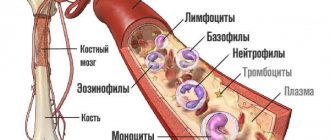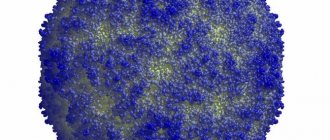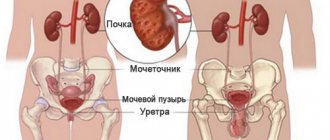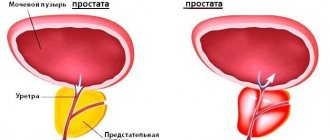Ureaplasma bacteria are found in the human genitourinary system and are considered opportunistic pathogens.
Ureaplasmosis in men is predominantly transmitted sexually, after unprotected sexual contact.
It is estimated that these microorganisms may occur in 20% of sexually active people.
Because ureaplasma often does not cause clinical signs, most infected patients do not realize that they are infected.
Moreover, despite the absence of symptoms, they can infect their sexual partners.
Reasons for the development of ureaplasmosis
Ureaplasma urealyticum is a bacterium belonging to the genus Ureaplasma and the family Mycoplasmataceae.
Other microbes that belong to this family include Mycoplasma genitalium.
The structure of bacteria is unique because they do not have a cell wall.
Consequently, they exhibit resistance to many antibiotics that act directly on the cell membrane.
Ureaplasma infection is one of the most common causes of urogenital problems.
Statistics show that this pathogen can be detected in 10% of sexually inactive women and 27-30% of patients who are sexually active (and are of reproductive age).
In postmenopausal people, ureaplasma bacteria are detected less frequently, in approximately 15% of cases.
What are the causes of ureaplasmosis in men?
Ureaplasma is a bacterium that is transmitted mainly through sexual contact, which means that the main cause of infection is unprotected sex.
At increased risk are men who do not use mechanical methods of contraception and live with a large number of sexual partners.
It is important to remember that bacteria can be transmitted through any type of sexual contact, including anal and oral, as well as through the use of shared sex toys.
Infection can occur if hygiene rules are neglected and a shared towel or underwear is shared with a sick person.
Although such cases of infection are extremely rare.
Infection with ureaplasma or mycoplasma, microbes that occupy an intermediate position between bacteria and viruses, occurs only during sexual intercourse with carriers of the infection.
Often, when diagnosing the disease, other genital infections are also detected: chlamydia, trichomonas, mycoplasma, etc.
Description
Scientists are still arguing whether the disease is infectious in nature. The fact is that its causative agents - mycoplasmas - are microorganisms of a special kind that belong to the class of mollicutes and are called opportunistic.
These pathogenic particles are between bacteria and viruses in structure, distribution, and activity. They are smaller than bacteria, but larger than viruses. There is a version that these microorganisms constantly live in the human genitourinary system.
“Favorite” localization sites are the mucous membranes of the intimate organs. They remain dormant for a long time, sometimes throughout their lives. Or they wait for a “suitable” case, for example, when immunity decreases and the body weakens.
It is then that their activity increases - pathogens rapidly multiply - a specific environment is formed - ureaplasma microflora, which blocks the functioning of beneficial bacteria. As a result, an inflammatory process develops.
Scientists have discovered that 12 varieties of mycoplasmas occur in nature, and some of them cause pathology: ureaplasmosis and mycoplasmosis.
Complication of ureaplasmosis - Reiter's disease
Ureaplasma is one of the possible causes of Reiter's disease.
This is a polysyndromic disease.
It causes damage to the joints, urogenital tract, eyes, and skin.
Men are affected at least 20 times more often than women.
According to some authors - 100 times.
Long-term carriage of ureaplasmas triggers reactive processes.
Autoimmune reactions occur.
These are inflammatory processes in which one’s own immunity begins to attack various tissues of the body.
The risk of Reiter's disease increases significantly in those men whose ureaplasma has penetrated the prostate gland.
In patients with untreated prostatitis, the disease is persistent, with frequent relapses.
There are 2 stages of Reiter's disease.
The first is infectious-toxic.
A focus of inflammation forms in the urogenital tract.
It becomes a source of toxemia and autosensitization of the body.
During this period, joint pain may already begin.
But etiotropic treatment is highly likely to lead to the disappearance of all symptoms.
If the patient does not receive therapy, and this happens quite often, then after 2-3 months the second stage occurs.
Men are not treated mainly because they do not have significant clinical manifestations.
The second stage is autoimmune.
Persistent and recurrent foci of autoimmune inflammation appear in various parts of the body.
The joints, eyes, and urethra become inflamed.
The skin of the genital organs and oral cavity is affected.
Sometimes the structures of the cardiovascular system become inflamed.
Diagnosis is difficult, since when the joints become inflamed, patients turn to a rheumatologist, who does not always consider Reiter’s disease as one of the likely causes.
The presence of signs of urethritis is often attributed to the presence of infections of the urogenital tract.
Although inflammation is already caused by reactive processes.
It becomes chronic and can last for months.
The joints begin to ache on average a month after signs of inflammation of the urethra appear.
The largest and most loaded joints are affected.
Usually these are the joints of the lower extremities.
The disease occurs as polyarthritis.
The skin over the joints is hot to the touch.
There is usually no redness, it is noted only when small joints are involved.
Significant effusion may occur.
The greatest danger is damage to the cardiovascular system.
It is possible to develop aortitis, myocarditis, and heart defects.
Where does ureaplasmosis come from in men: causes of infection
It should be noted that ureaplasma infection is considered “female”. It occurs mainly among the fairer sex, not only among those who are sexually active, but also among virgins. Since infection of the fetus from the mother occurs during pregnancy and childbirth.
Theoretically, pathogens spread during medical procedures (cauterization of erosion, removal of the coil, abortion). Such reasons are rather an exception, because sterility is strictly observed in medical institutions. For a long time, a woman may not even realize that she is a carrier of the disease.
Ureaplasma infection is observed less frequently in men, and in 90% of cases it is transmitted from a carrier (sex partner) during unprotected sexual intercourse.
Household infection is a rather rare phenomenon, but it does occur, especially in cases of sharing a washcloth or towel with a person who is a carrier.
While swimming, for example, in a pool, and even more so in the sea, ureaplasmosis is not dangerous.
Ureaplasma: causes of chronicity
Due to the peculiarities of its structure, ureaplasma is insensitive to standard antibacterial therapy.
Often, long-term targeted treatment does not lead to complete sanitization of the body from the pathogen.
At the same time, the chronic course of the disease begins.
It is characterized by the absence of unpleasant symptoms for a longer period of time.
When immunity decreases, the disease worsens.
Then the symptoms go away again with treatment.
This does not mean recovery.
It is quite difficult to achieve a complete cure when ureaplasmosis is chronic.
This often requires a long course of medications and constant laboratory monitoring.
Treatment is also complicated by the fact that today people often take antibiotics uncontrollably and without a doctor’s testimony.
This creates drug resistance in microorganisms.
For optimal therapy, a special analysis should be performed: bacteriological culture with a sample of antibiotics.
In such a study, small plates soaked with an antibiotic are placed on the culture of the microorganism.
Next, we monitor which drug caused the most dramatic reduction in the growth of ureaplasma.
The results of the analysis give the doctor the opportunity to prescribe the drug to which the bacterium is most sensitive.
Important! You should not self-medicate if you suspect ureaplasmosis or another infection.
Self-administration of antibacterial agents forms colonies of resistant bacteria inside the body.
Coping with this disease is quite difficult and expensive.
The doctor is forced to prescribe rarer and more expensive drugs.
At the slightest suspicion of infection, consult a specialist.
Symptoms and signs: first and main
Like other diseases belonging to the group of venereological diseases, ureaplasmosis has a number of characteristic symptoms. They can be divided into first and main ones; they manifest themselves as follows:
- In the morning, cloudy, sticky mucus with an unpleasant odor is released from the urethra;
- There is a frequent urge to urinate. At the same time, the amount of urine flowing out is scanty, and the process itself is accompanied by a strong burning sensation;
- The edge of the opening of the penis turns red.
After a few days, the feeling of discomfort intensifies, the flesh of the penis swells, and unbearable itching occurs.
Accelerated ejaculation is also an indicator of the onset of the disease. Although many say that in this case there is no time for intimacy. And the reason for this is not only physiological changes, but also emotional ones: sexual desires dull during the acute stage of the disease.
Symptoms of ureaplasmosis in men are often less pronounced than in women. Sometimes only one sign appears (especially if the stronger sex has good immunity). Therefore, for a long time the patient does not undertake any treatment, which aggravates the condition.
Sources of infection
Ureaplasmosis in men has three causes:
- sexual distribution;
- contact and household transmission through household items;
- transmission of the pathogen from mother to fetus.
Ureaplasma parvum and urealiticum in men appear in 95% of cases after unprotected sexual intercourse. The source of infection is a patient with urogenital form of ureaplasmosis. The route of transmission is sexual. Pathogens are transmitted to a man from an infected woman through vaginal secretions, which contain a large number of them. The chance of contracting an infection with a single unprotected sexual intercourse is more than 60%, with repeated intercourse - about 90%. A partner with a weakened immune system and poor resistance to any infections is at greater risk. Such people are more likely to develop acute urethritis with a clear clinical picture.
Ureaplasma parvum and urealiticum in men in 95% of cases appear after unprotected sexual intercourse
Infection through household contact is much less common. Ureaplasma can survive for some time on various objects, things and surfaces, from where it then enters the human body. The greatest contamination is typical for personal hygiene products, towels, toilets and baths. Public baths and saunas also pose a danger. Many people forget about visiting these places and do not understand where ureaplasma comes from in their body. It may take a long time before symptoms of the disease appear, and the infected person himself becomes a source of infection.
Infection with ureaplasma is also possible in the womb through the placenta from mother to fetus (vertical or transplacental transmission). When a child passes through the genital tract during childbirth, the child becomes infected in two ways. The child, while in the vagina, aspirates the contents of the infected tract, which provokes the development of bronchopneumonia, which requires long-term treatment. Contact may cause vulvovaginitis in girls, and urethritis or balanoposthitis in boys.
Diagnostics
If initial signs appear, you should immediately consult a doctor. The definition of “opportunistic” still indicates a deviation from the norm and delay in treatment threatens the transition of the acute form to a chronic condition.
The first thing the specialist will do is a smear from the urethra. But it happens that a general smear examination does not make it possible to determine the presence of infection. With this disease, the level of leukocytes in the mucosa may not exceed the norm or only slightly increase. Therefore, in order to verify the occurrence of infection, more complex research methods are prescribed.
Ureaplasma: causes of asymptomatic course
The reasons for the asymptomatic course lie in the body's defenses.
High immunity, good quality of life, proper nutrition - all this prevents ureaplasma from causing symptoms.
Doctors often come to the conclusion that ureaplasma is more likely an opportunistic organism.
There is no consensus here.
Sometimes the harm that large doses of antibiotics cause to the body can be greater than the harm from ureaplasmosis without exacerbations.
To treat or not to treat?
Often this question arises in the absence of signs of inflammation.
It should be understood that each situation can be individual.
The doctor makes the final decision after a complete examination.
The clinical picture, quantitative indicators and other parameters are taken into account.
It is definitely worth treating ureaplasma before planning a pregnancy for both partners.
This is due to the fact that the inevitable decrease in the pregnant woman’s immunity will contribute to inflammation.
It is worth undergoing a course of treatment even if you are diagnosed with infertility.
Analysis for ureaplasmosis in men
Laboratory methods for recognizing the presence of ureaplasma include:
- ELISA – enzyme immunoassay. A scraping of the mucous membrane from the penis is taken, and the presence of viruses and other microorganisms is determined in this biological material;
- Bacteriological analysis. A smear reveals the number of ureaplasmas and determines their sensitivity to various antibacterial drugs;
- PCR. Thorough examination of discharge and morning urine using polymerase chain reaction. Refers to the most effective methods for diagnosing various infectious lesions;
- Serological analysis. The material for examination is blood. The presence of antibodies to microorganisms is determined.
Test results are usually ready in 5-7 hours, that is, you can find them out the next business day.
Types of ureaplasma bacteria
The genus Ureaplasma is divided into 7 species. Of these 7 species, only 2 cause ureaplasmosis. It is for the presence of these two species that laboratory tests are usually taken:
- Ureaplasma urealyticum,
- Ureaplasma parvum.
When microorganisms of both types are found in a smear, they are conventionally classified as Ureaplasma spp.
Determining the type of microbes is primarily necessary to prescribe effective therapy. As for the symptoms of infection, they differ little, and there is still debate about the specific pathogenicity of both microbes. But in general, researchers are inclined to believe that there is no particular difference in the approach to treating diseases caused by these two microorganisms. And the treatment regimen in all cases of ureaplasmosis will be the same (antibiotics + local treatment + immunostimulating therapy).
Treatment
There is an opinion that there is no need to treat ureaplasmosis in men. If a person has a strong immune system, then self-healing occurs. This is just an illusion, and a dangerous one at that.
The disease requires appropriate therapy, which is prescribed according to examination data. And it must be comprehensive.
Both partners need to take therapeutic measures. First of all, you should avoid sexual intercourse (even with condoms), review your diet: give up junk food and alcohol.
For complete recovery, a special treatment regimen is provided:
- Taking antibacterial drugs (“Spiramycin”, “Erythromycin” and others);
- Hygiene of the genital organs (baths) with Miramistin solution, which has a local anti-inflammatory effect;
- To normalize the outflow of urine, diuretics are recommended (must be prescribed by a doctor);
- Use of immunomodulatory drugs (Viferon, Kipferon tablets or injection vaccines);
- Using probiotics, for example, Bifilakt, to protect the intestines from the negative effects of antibiotics.
The medicine is prescribed by a doctor and taken in strict accordance with the instructions.
The duration of treatment is from 3 to 5 days. The course of antibiotics must be completed completely, even if the primary signs of the disease have disappeared. If the disease is not cured, it can become chronic and subsequently constantly recur.
On social networks people often ask the question of how to treat mycoplasmas using traditional methods. The answer is clear - no way. Medicinal plants are not able to get rid of the disease; they are used only as an adjuvant, as vitamin decoctions for washing and increasing immunity.
Stages
- Incubation period. For men it usually takes 35–40 days. In the absence of disturbances on the part of the immune system, it can last for several years.
- Early stage. It proceeds without pronounced signs of an infectious process. During this period, pathogenic microflora grows.
- Stage of clinical exacerbations. Characterized by the development of specific symptoms.
Completion of the process depends on timely contacting a doctor and prescribing adequate treatment. In this case, complete recovery from the disease occurs.
In the absence of necessary therapy, the transition of the acute process to a chronic course or the development of complications is possible.
Why it’s dangerous: consequences and complications
Without treatment, ureaplasma infection can cause complications: urethritis, prostatitis, urethral stricture.
Moreover, being in the active stage, ureaplasma is able to penetrate other systems of the body, causing the development of inflammation there and provoking serious consequences:
- Excretory system (pyelonephritis, kidney and bladder stones);
- Musculoskeletal system (arthritis);
- Respiratory system (pneumonia);
- Reproductive function (deterioration of sperm quality, infertility).
Disease prevention
To avoid infection, you must follow simple rules:
- Avoid promiscuous sexual relations with unfamiliar partners;
- Do not neglect to use condoms;
- If unprotected sexual intercourse does occur, then it is necessary to urgently treat the genitals with an antiseptic solution. For men, the solution is injected directly into the urethra;
- Monitor the strengthening of immunity;
- Try not to get too cold;
- Avoid overwork and stressful situations;
- Give up bad habits (excessive alcohol consumption, smoking);
- Stick to a balanced diet;
- Periodically take a course of vitamin-mineral complexes;
- Maintain personal hygiene;
- Regularly visit a urologist and undergo medical examinations;
- Do not delay treatment of inflammatory diseases of the pelvic organs.
Fortunately, ureaplasma infection can be treated quickly and effectively. Complete relief is possible, as well as from other venereological pathologies that are sexually transmitted. But no one can guarantee that infection will not happen again. After all, the body does not develop immunity to them. Therefore, it is worth remembering the medical rule that it is easier to prevent a disease than to fight it.











